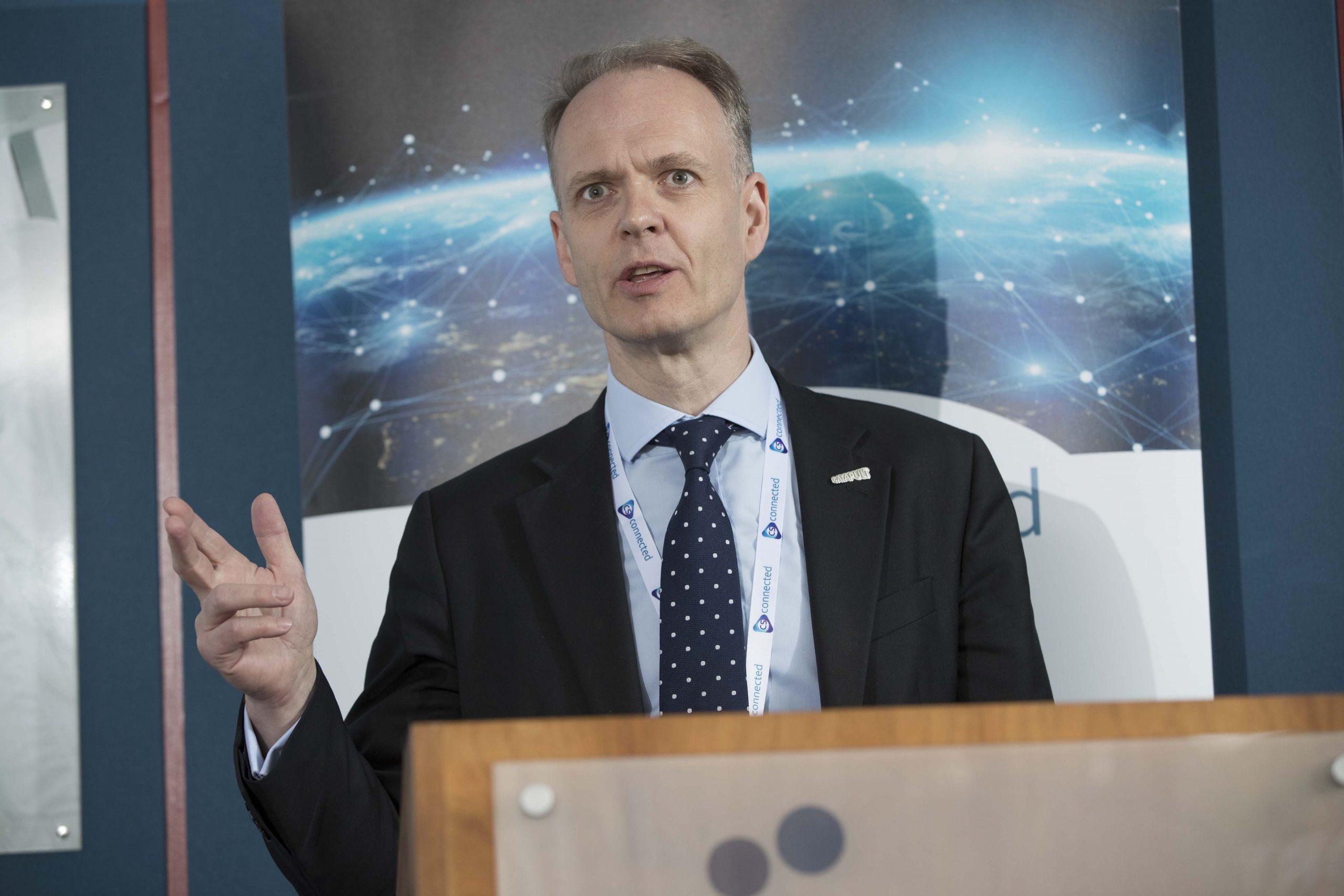Dr Andy Sellars, Strategic Development Director, has been with CSA Catapult from its early beginnings. Joining the team in 2016, Andy was one of the first employees of the Catapult, after a career at Innovate UK as Lead Technologist.
Now four years on, Andy tells us about his role at the Catapult and how the technology landscape has changed since his first appointment at the company. Read more about his journey at the Catapult below.
Tell us more about your role at the Catapult
I’m the Strategic Development Director at CSA Catapult. This means that I am responsible for making sure that we’re pointing the Catapult in the right direction, towards the best opportunities, to make the biggest impact for the UK economy.
Back in Oct 2015, when I was working for Innovate UK, I developed the £50m business case for the CSA Catapult, which focused on the application of compound semiconductors.
Why was the focus for the Catapult to specialise in compound semiconductor applications?
In 2010, the Department for Business Innovation and Skills published a report by Dr Hermann Hauser on the ‘Current and Future Role of Technology and Innovation Centres in the UK’. This report recommended the formation of translational research facilities, which became known as Catapults, to accelerate the commercial application of research from the UK’s high-calibre universities.
There are currently 8 other Catapults across the UK, specialising in areas such as Cell and Gene Therapy, Connected Places, Digital, Energy Systems, , High Value Manufacturing, Medicines Discovery, Offshore Renewable Energy and Satellite Applications.
Innovate UK investigated the viability of several new Catapults. In the case of compound semiconductors, I consulted around 200 companies, 50 universities and worked closely with trade associations and the KTN to map out the opportunities for compound semiconductors in key technology areas such as Photonics, Power Electronics, RF and microwave. We identified technology trends, such as the electrification of transport, and the move away from petrol and diesel vehicles, which supported the Catapult business case.
Fast forward a few months and the Catapult business case was approved. And now here we are, five years on since the initial idea and a lot has changed since then!
What activities are you currently working on?
At CSA Catapult I’m currently leading the strategy refresh. This is something we do every year to ensure we understand the latest technology, market and societal trends, so that our efforts deliver the maximum impact for the UK economy. As the landscape is continuously changing, it’s important that we remain abreast of emerging trends.
At the outset, we identified great opportunities to work with Power Electronic companies to help the UK automotive industry transition from internal combustion engines to electric propulsion. With this year’s strategy refresh, we see new opportunities to help industry reduce carbon emissions as part of the drive to meet the UK Government’s goal of achieving NetZero emissions by 2050. We are working closely with other Catapults in the network, to harness our complimentary expertise and capabilities as part of a cross-Catapult NetZero initiative.
Currently we are looking at development areas for compound semiconductors in digital communications and healthcare applications. We are analysing these markets, identifying UK capabilities, and how the Catapult can help accelerate technology developments.
How do you see the technology industry post COVID?
The COVID pandemic has highlighted the fragility of complex, international supply chains, leading to renewed interest in resilience. This aligns with the Catapult’s strategy to develop UK supply chains of compound semiconductors. We also have a role to help companies grow and stimulate a green economic recovery post-COVID. Post COVID, I can see more emphasis being targeted towards the healthcare, telecoms and manufacturing sectors and looking at ways to make the economy more resilient to future shocks.
There’s a lot of emphasis related to the track and trace technology of COVID 19. As a Catapult, we’re looking at healthcare diagnostics and sanitising to help identify where compound semiconductors fit into clinical equipment. We’ve always been aware that compound semiconductors play a big part in healthcare applications, but understandably we’re now giving this area more of our focus.
Tell us something we didn't already know about you
In the early days of my career, I designed the lights that were used in Pinewood Studios on the James Bond film set.
How are you coping with lockdown?
Four years ago, I was introduced to yoga. As it’s International Yoga Day on Sunday 21 June, I’ll be practising 108 Surya Namaskar salutations.





